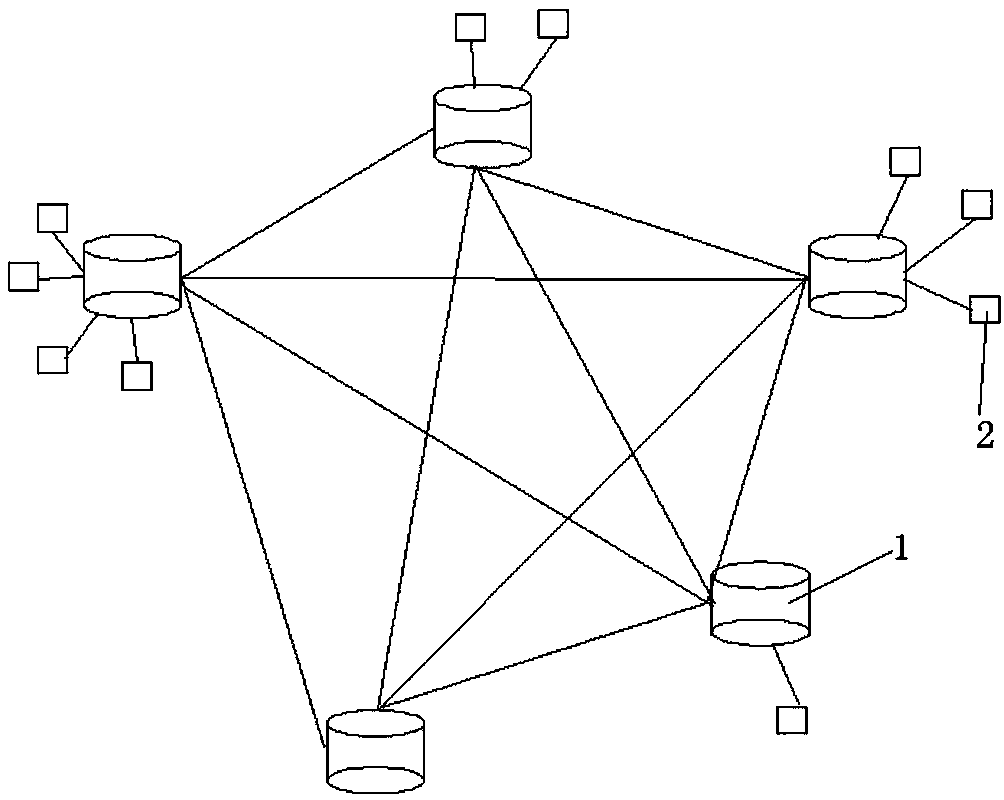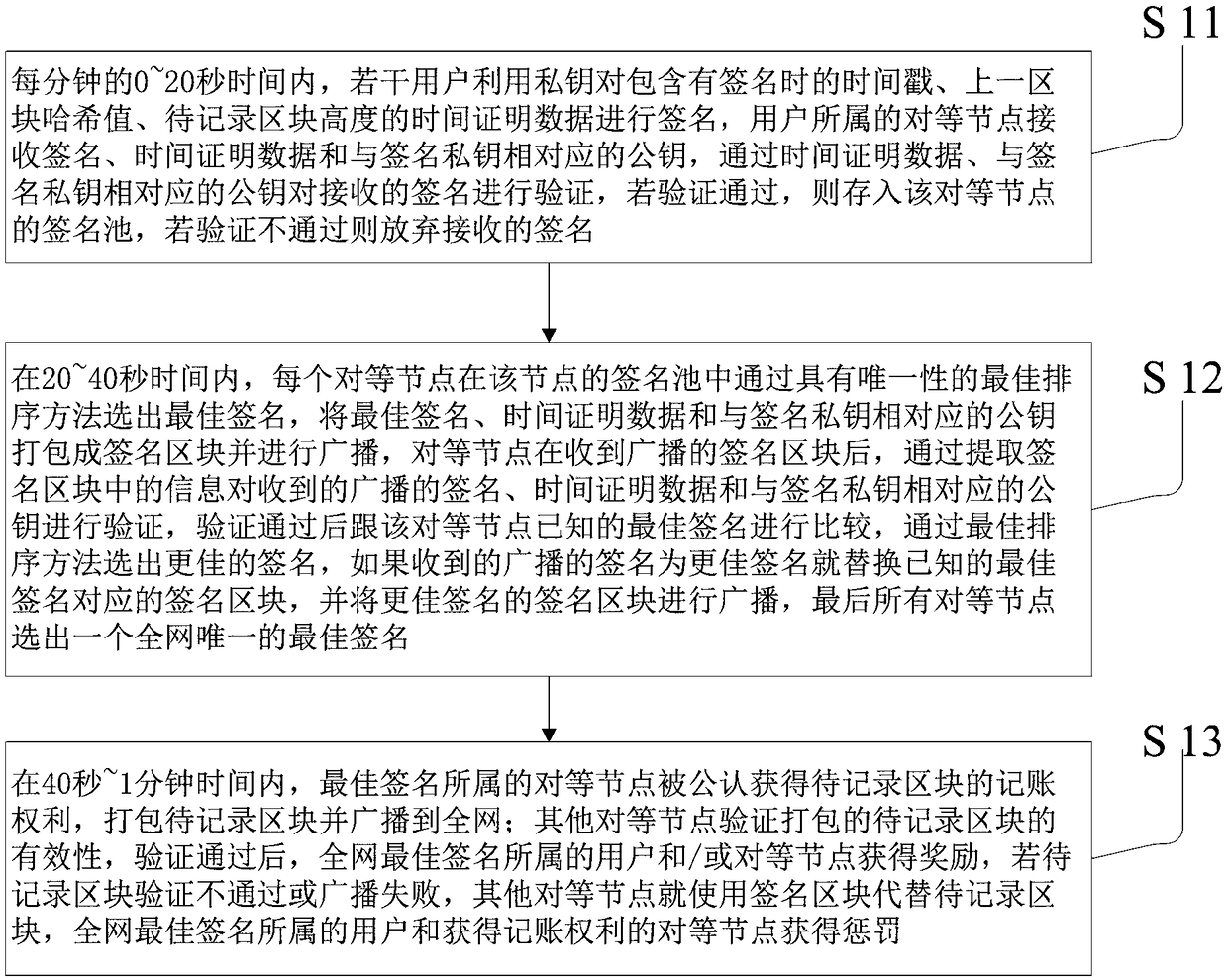De-centralization consensus method and system based on proof of time and block chain system
A decentralized and blockchain technology, applied in the blockchain field, can solve problems such as centralization, non-uniqueness, slow block speed, etc., and achieve high-speed consensus, efficient consensus speed, and large throughput.
- Summary
- Abstract
- Description
- Claims
- Application Information
AI Technical Summary
Problems solved by technology
Method used
Image
Examples
Embodiment 1
[0032] For the convenience of explanation, take each time period T as 1 minute, t1 as the 20th second, and t2 as the 40th second to illustrate the decentralized consensus method based on time proof provided by the present invention.
[0033] Such as figure 1 As shown, the decentralized consensus method based on time proof provided by Embodiment 1 of the present invention is as follows:
[0034] Step S1 Signature phase: within 0 to 20 seconds per minute, several users use their private keys to sign the time proof data including the time stamp at the time of signing, the hash value of the previous data block, and the height of the data block to be recorded. The peer node to which it belongs receives the signature, time proof data and the public key corresponding to the signature private key, and verifies the received signature through the time proof data and the public key corresponding to the signature private key. If the verification passes, it will be stored in The signature...
Embodiment 2
[0043] As shown in Figure 2, Embodiment 2 of the present invention provides a proof-of-time-based decentralized consensus system implemented using the proof-of-time-based decentralized consensus method provided in Embodiment 1, including decentralized hierarchical peer-to-peer Network and trusted time source system; the decentralized layered peer-to-peer network includes a peer-to-peer network layer composed of several peer nodes 1 connected through P2P and accurately timed, a number of terminal devices 2 connected to a peer node 1 and peer An ape-to-peer network layer consisting of peer nodes 1. Peer node 1 has certain computing resources, including storage space, CPU, stable bandwidth and IP address; terminal device 2 only needs to be able to connect to the Internet and run basic encryption and decryption algorithms. The peer-to-peer network layer in the decentralized layered peer-to-peer network is used to handle decentralized work such as peer-to-peer node self-bookkeeping...
Embodiment 3
[0045] The blockchain system provided in Embodiment 3 of the present invention includes the decentralized consensus system provided in Embodiment 2 of the present invention. The blockchain system executes a decentralized consensus method based on proof of time every 1 minute. Each block includes at least the hash value of the previous block, the best signature, the timestamp corresponding to the best signature, and the winning blockchain node, so as to achieve the irreversibility and traceability of the blockchain, and the unforgeability and tampering of transactions , The effect of non-copyable and stolen resources.
[0046] As shown in Figure 3, the decentralized consensus method based on time proof adopted by the blockchain system is as follows:
[0047] Step S11 Signature phase: within 0 to 20 seconds per minute, several users use their private keys to sign the time proof data including the time stamp at the time of signing, the hash value of the previous block, and the h...
PUM
 Login to View More
Login to View More Abstract
Description
Claims
Application Information
 Login to View More
Login to View More - R&D
- Intellectual Property
- Life Sciences
- Materials
- Tech Scout
- Unparalleled Data Quality
- Higher Quality Content
- 60% Fewer Hallucinations
Browse by: Latest US Patents, China's latest patents, Technical Efficacy Thesaurus, Application Domain, Technology Topic, Popular Technical Reports.
© 2025 PatSnap. All rights reserved.Legal|Privacy policy|Modern Slavery Act Transparency Statement|Sitemap|About US| Contact US: help@patsnap.com



